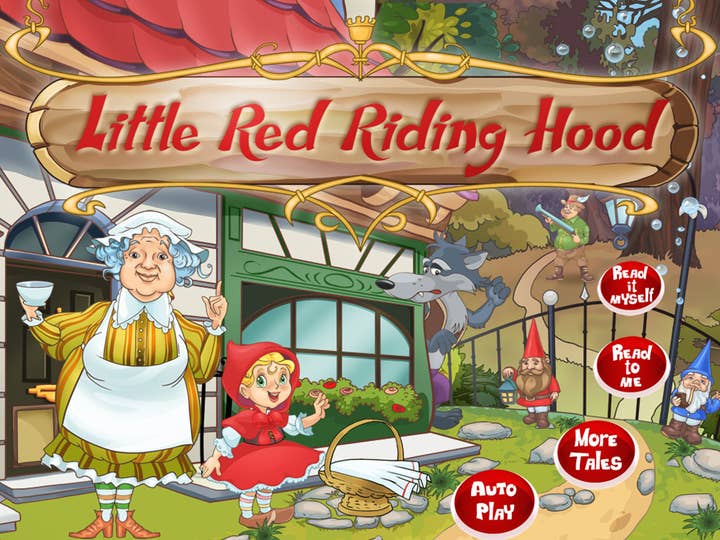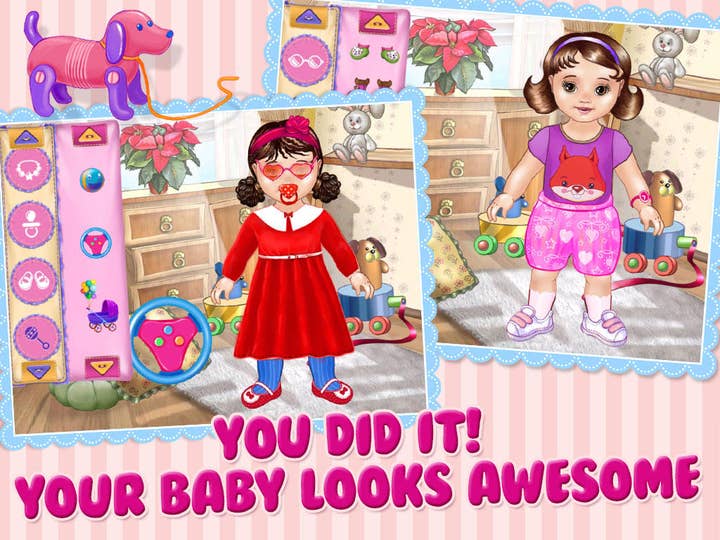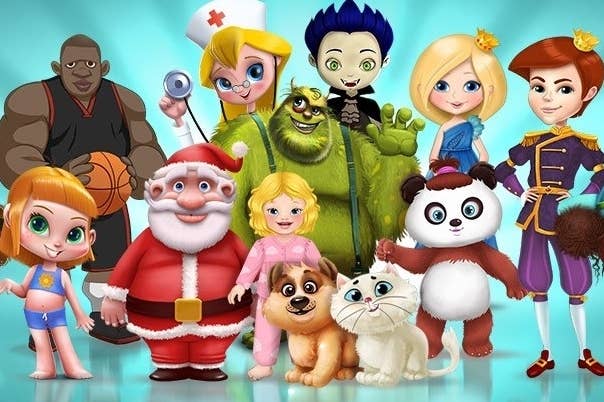TabTale: "We don't believe in virtual currency for kids"
CEO Sagi Schliesser on finding success in the complicated business of making games for children
This year's Casual Connect Europe conference was a sobering reminder that not all industry trends are positive. Peter Molyneux got the ball rolling with a harsh indictment of the way many free-to-play games treat their players. Laralyn McWilliams poked holes in the way the industry uses data to understand the psychology of its customers, then voiced similar disdain for the "best practices" of the free-to-play model. And Spil Games' Eric Goosens iced the cake with his somewhat gloomy assessment of the economic future for small developers in the casual space. Interesting perspectives one and all, but unavoidably light on feel-good sentiment.
"We got to a place last year where we had 6 releases a month. We're going to finish the year on 20 apps a month"
In many ways, TabTale cuts against these trends. Founded in 2010 in Tel Aviv, Israel, TabTale was starting out just as the mobile and casual markets were beginning to consolidate, with a plan to build its business on a model that had challenged and defeated more established companies: free-to-play games for kids. Now, just four years later, TabTale boasts more than 300 million lifetime downloads and 25 million monthly active users, with the majority of that growth occurring in the last 18 months. When I meet with Sagi Schliesser, the company's CEO, he describes the future in terms of multimedia powerhouses like Disney and Nickelodeon. If the opportunities for casual gaming startups really are disappearing, somebody neglected to inform TabTale.
"We're driving in a different direction," Schliesser says. "I've seem some very good lectures [at Casual Connect] and they all describe this funnel where they have 100 ideas and they push 20 to prototype, then down to 10, then 5 get released, and then 2 they try to make into a hit. We work the opposite way: almost everything we think about we push all the way to the app stores."
At first glance, TabTale's philosophy might rub certain people the wrong way. It is creativity as an economy of scale, where the speed, breadth and variety of output are valued above more artistic concerns. Schliesser would rather have 100 small games of a certain standard than one big one that raises the bar. "They don't always perform the same but we know that from lowest to highest we can still hit a benchmark," he says. "We got to a place last year where we had 6 releases a month. This year we're now around 10, and we're going to finish the year on 20 apps a month."

This incredible rate of production is made possible by an intricate, template-based process, and a combined effort from the company's global network of studios. Schliesser describes it as akin to a "huge factory" and, given his target output of 20 apps a month, the analogy doesn't strike me as out of place.
"Kids really like diversity, with the same characters in different contexts," he says. "So we built this very tuned machine, where we have an interactive books template, an education template, around ten templates for casual games for kids. We have teams in Israel, Macedonia, the Ukraine, Bulgaria, India, and we have this very tuned process in creation. Within a few weeks we can implement on one of the templates... It's a huge, huge operation."
Schliesser is very clear in his reasoning for this mechanical approach to production. When your target audience is children aged two-to-five and six-to-ten, he says, your ability to accurately predict tastes and trends is severely restricted. In part, this is due to the limited ability to communicate possessed by children in those age groups, but in most of TabTale's key markets there are also clear guidelines on how companies can interact with minors. And relatively recent actions by the Federal Trade Commission in the US and the Office of Fair Trading in the UK point to a future where developers will have to exercise even more caution.
"There are casual games for kids that are breaking the rules. We fear that parents will get mad and there will be an uproar against the entire industry"
TabTale makes up for this handicap with post-launch data analysis of its products, attempting to learn as much as possible about the whims of its audience while maintaining a certain distance. To that end, more games just means more data to analyse and use as a basis for TabTale's future products, the company edging ever closer to an accurate picture of a lucrative market exclusively populated by the under-tens.
"For each game, after a week or two we look at the data and try to learn the critical things: that character, that activity, that scenario," he says. "We don't update [our games] constantly. What we take from each one is actionable information, so the next game in the series is the one that gets the improved capabilities wanted by the players... We know really intimately what kids like at certain ages, and in different countries."
Regardless of how mechanical TabTale's inner workings can sound, there is a curious sense of moral rectitude to the entire operation. Schliesser can understand why discussion of aggressive monetisation techniques tends to dominate conferences like Casual Connect, and he wants TabTale to stand as an example of a better way. When the audience has no disposable income 'free' really is the only acceptable price of entry, but Schliesser argues that the lines between 'good' and 'bad' in free-to-play are a little sharper than many would suggest.
"We don't believe in virtual currency for kids," he says, pointing out that Apple's lawsuit with the FTC, in which it paid more than $30 million to aggrieved parents, was entirely focused on products that made revenue from selling finite resources. There is no limit to the amount of these items that can be purchased, Schliesser says, and so there's no argument for their presence in a product aimed at young children. Instead, TabTale has created a model around expansion packs, where a limited experience is available for free and new areas and activities can be unlocked for a price - anything from $1.99 to $5.99 depending on the content, a more substantial proposition than that associated with microtransactions.

"Some companies are trying to leverage that - fast, fast, fast," Schliesser says. "We try to drive players into the free places, and then if they get good value they can ask their father or mother. I know my daughters ask me, and it can be a good way to teach them about monetary responsibility. I give them a budget, and they manage that budget.
"What's more important than optimising around specific [saleable] items is getting a high rate of retention. With kids, it's not like an MMORPG or Clash of Clans; if you don't get them engaged they won't return. If you want them to come back you need to leave a memorable impression, and then once they see the icon or you give them a push notification - 'we miss you' - it hits the right chord. This is only achieved through quality. That's what we've learned."
"We know really intimately what kids like at certain ages, and in different countries"
In truth, Schliesser doesn't entirely agree with the view of as predatory and manipulative. We are in an age, he says, where most people will just read the headline and move on, leaving themselves unprepared for situations that could easily have been anticipated and prevented - there's a parenting issue here, too, a broader context than that reflected in the FTC's ruling against Apple. But he also knows that certain developers have flirted with ethical disaster, and will likely continue to do so without extra protections. Inevitably, Schliesser is reluctant to name names, but he assures me that TabTale will never be on that list.
"When it's for ages two-to-five it's mostly moderated by parents, so it's a bit safer. But six-plus? In our view, there are casual games for kids of that age that are breaking the rules. It's a problem, because we fear that parents will get mad at that and there will be an uproar against the entire industry. Companies put $12.99 or even $19.99 on games for kids? That's a horrible price for this type of game - it's not reasonable. They also put 'Buy' on the first page, just under 'Play', and a six-year old might just press that. They're trying to squeeze [the audience].
"There are definitely strategies for that and we stay away from them, because, in the end, it should be a long-term relationship. We have a solid community that has grown throughout the years. You don't get to 25 million MAUs by mistake. People recognise the brand, they recognise its value, and that's where we want to be."

